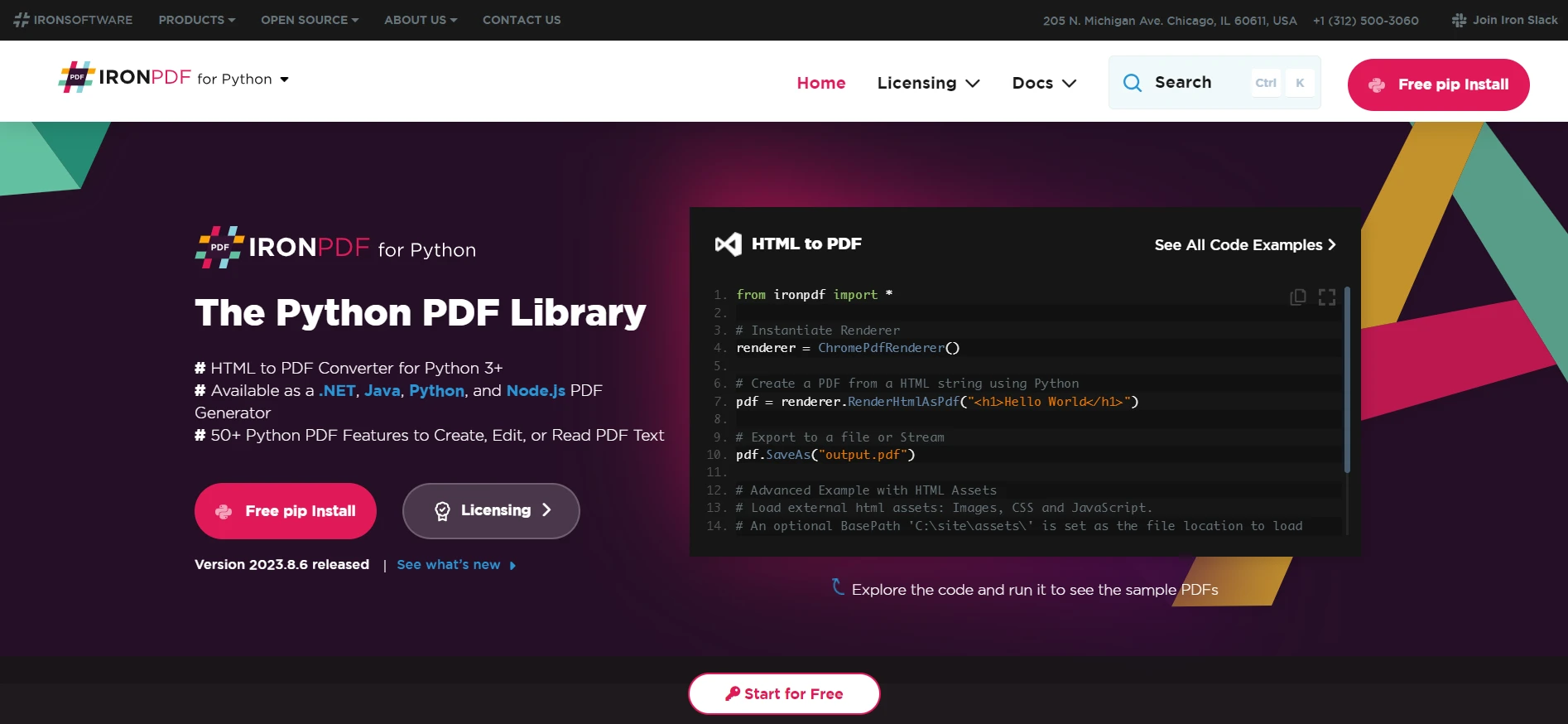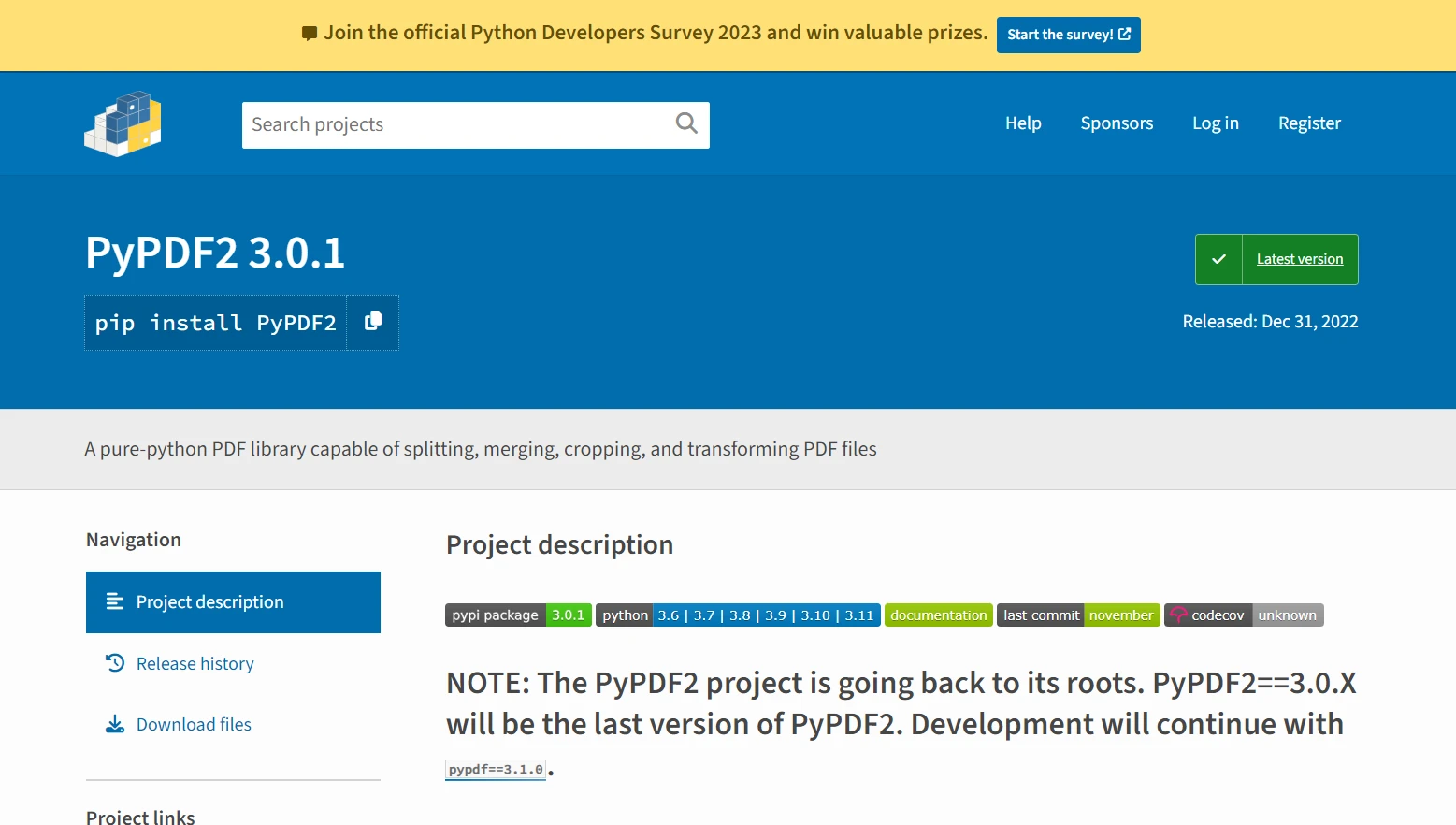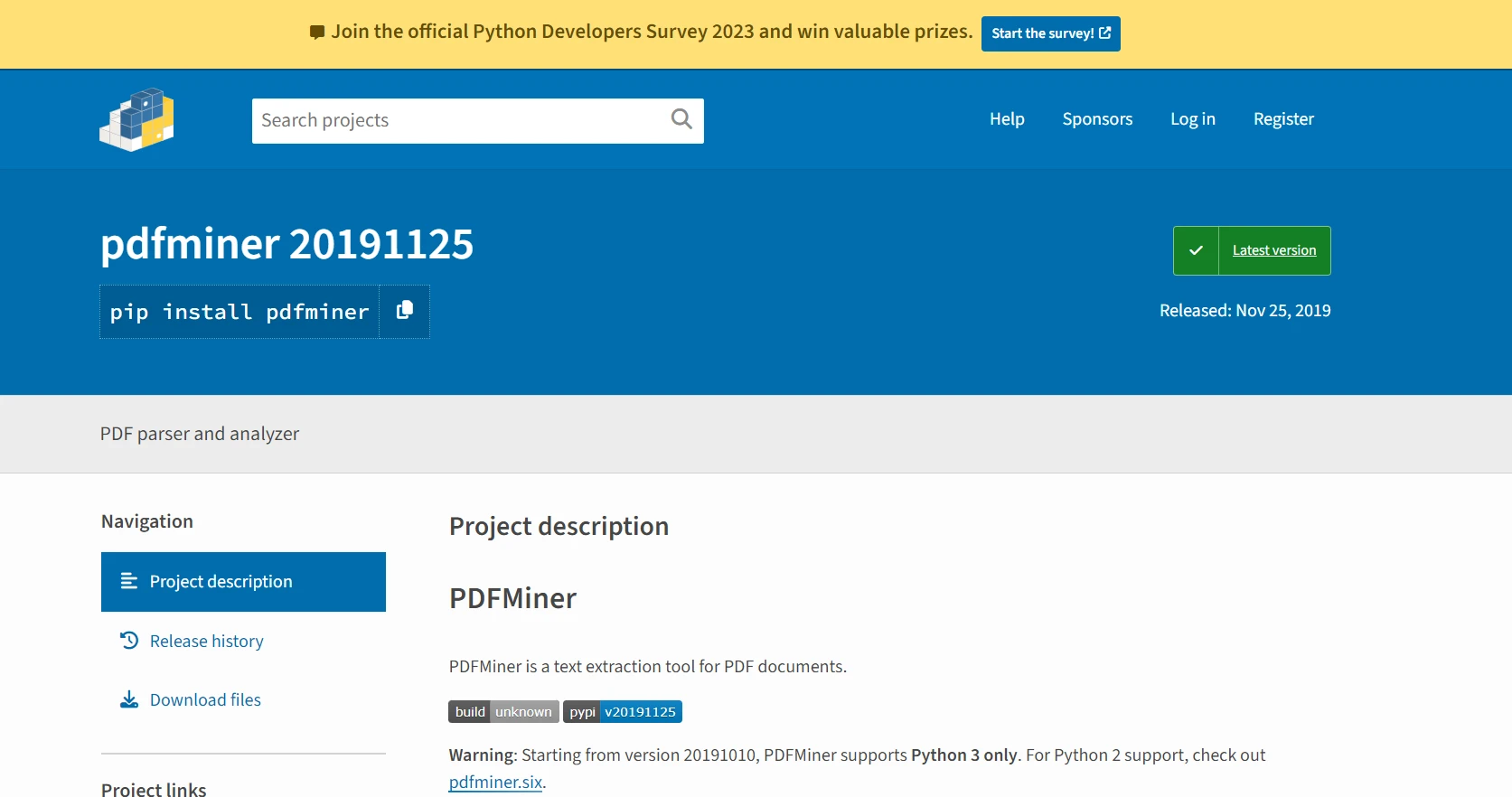Test in production without watermarks.
Works wherever you need it to.
Get 30 days of fully functional product.
Have it up and running in minutes.
Full access to our support engineering team during your product trial
This article delves into the best Python libraries for working with PDFs, highlighting their features and how they cater to the specific needs of data scientists, developers, and anyone needing to handle unstructured data sources.
 IronPDF for Python
IronPDF for Python
When it comes to manipulating PDF files with Python, IronPDF stands out as a premium choice. It is not a pure Python PDF library, but its capabilities in PDF processing are extensive. It offers an explicit interface to convert PDF documents to other formats. Developers can transform PDF files into images or HTML, allowing a versatile output file to be displayed on web pages or edited in image editors.
IronPDF supports advanced features like text analytics, providing tools for data scientists to extract text and analyze text data. Moreover, it can handle multiple pages within a PDF document, allowing for operations like rotating PDF pages, cropping pages, and even searching for text at an exact location.
The library is also an excellent choice for implementing features like PDF file print functionality into their applications. It ensures a high level of compatibility and performance, making it a go-to solution for professionals who need a reliable and powerful tool.
IronPDF for Python offers a tiered licensing model, with the minimum pricing for a Lite license set at $749. This option is ideal for a single developer and permits deployment within one application.
The pricing structure scales up through more inclusive licenses, such as the Plus and Professional, catering to larger teams and multiple applications, and even extends to a Royalty-Free/SaaS/OEM Redistribution license for broad distribution without royalty fees.
Each purchase comes with a year of support and updates, with the option to extend for an additional five years at a separate cost. IronPDF also offers a free trial.
 PyPDF2
PyPDF2
PyPDF2 is a widely-used Python PDF library that excels in reading and writing PDF files in Python. It offers a straightforward approach to manipulating PDF documents, including merging documents, splitting PDF pages, and rotating PDF pages.
PyPDF2 allows developers to easily access page objects and extract text, making it a good choice for basic text analytics tasks.
While it does not provide as extensive a feature set as some other Python PDF libraries for transforming PDF files, its simplicity makes it a great starting point for beginners in the Python programming language or those with simpler PDF processing needs.
PyPDF2 is free to use as an open-source library under the BSD License. There are no costs associated with using the library itself, although certain advanced features like encrypting or decrypting PDFs with AES will require extra dependencies, which may have their own costs.
 PDFMiner
PDFMiner
PDFMiner shines in text extraction and analytics, making it a valuable tool for data scientists and developers looking to analyze unstructured text data. As a pure Python PDF library, it offers detailed control over text formats, allowing users to precisely extract custom data and handle unstructured data sources.
Its ability to locate the exact location of text within a PDF page makes it particularly useful for applications that require high accuracy in text analytics, such as natural language processing or machine learning. The PDFMiner library can also handle multiple pages and convert PDF documents into other text formats.
PDFMiner is available under the MIT License, a permissive free software license. Like PyPDF2, it is open-source and free to use. There are no fees for utilizing PDFMiner in your projects, making it an economically attractive option for text extraction and analysis tasks.
Selecting the best Python PDF library depends mainly on the specific PDF processing needs. IronPDF is a strong candidate for comprehensive PDF file manipulation, offering many features and powerful text analytics capabilities.
For those who need pure Python PDF libraries that are easy to use, PyPDF2 and PDFMiner are excellent choices, each with their own strengths in handling and extracting text data. For creating complex PDF documents with custom layouts, ReportLab provides the necessary tools.
Whether you are a data scientist looking to extract text from PDF files, a developer aiming to convert PDF files, or you need to manipulate PDF files in any other way, there is a Python library tailored to your needs.
Python continues to support its community with robust libraries, confirming its status as a versatile interpreted language ideal for working with various unstructured data sources.